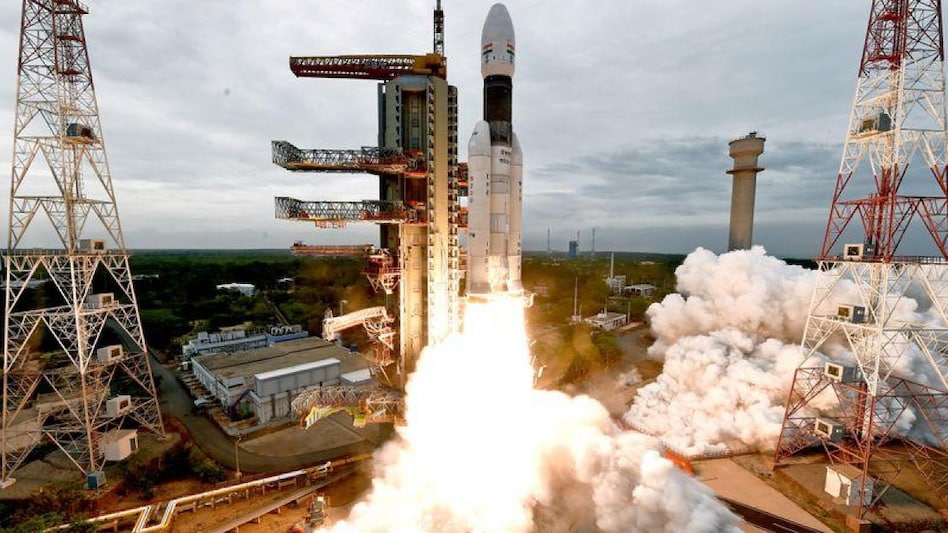 India's Geosynchronous Satellite Launch Vehicle Mk III-M1 blasts off carrying Chandrayaan-2 from the Satish Dhawan space centre at Sriharikota (ISRO/Handout via REUTERS)
India's Geosynchronous Satellite Launch Vehicle Mk III-M1 blasts off carrying Chandrayaan-2 from the Satish Dhawan space centre at Sriharikota (ISRO/Handout via REUTERS)
 India's Geosynchronous Satellite Launch Vehicle Mk III-M1 blasts off carrying Chandrayaan-2 from the Satish Dhawan space centre at Sriharikota (ISRO/Handout via REUTERS)
India's Geosynchronous Satellite Launch Vehicle Mk III-M1 blasts off carrying Chandrayaan-2 from the Satish Dhawan space centre at Sriharikota (ISRO/Handout via REUTERS)India's Mars mission might have incurred a cost lower than that of certain Hollywood films, however, the era characterised by resourcefulness and economic engineering in the nation will eventually need to pave the way for increased funding and larger rocket systems, as highlighted by K Sivan, the former chief of ISRO.
While Chandrayaan-3 was launched on July 14, with the lander anticipated to make contact with the Moon's surface by August 23, Russia initiated its lunar mission on August 10, targeting a landing on August 21.
The substantial variance in mission durations can be attributed to India's decision to employ a slingshot manoeuvre towards the Moon. This technique employs Earth's gravitational pull to propel a spacecraft along its trajectory. In contrast, Russia utilised a more substantial rocket to directly place the satellite into lunar orbit.
During an interview with NDTV, K Sivan remarked, "We need bigger rockets and bigger systems. We cannot live with frugal engineering alone. We must embrace high-thrust rockets and cutting-edge technology. In this regard, the government's decision to involve private industries in space activities is a positive step."
The former ISRO chief pointed out that the private sector is exhibiting keen interest, and the outcomes are already becoming evident. He expressed confidence that these entities will soon be capable of engaging in advanced technology as well, with financial backing posing no hindrance.
He also expressed optimism regarding India's aspirations being propelled by the upcoming Gaganyaan mission, which will mark the country's maiden manned space endeavour. Sivan envisions the successful implementation of this technology as a precursor to ambitious projects such as a lunar space station and other significant ventures.
Reflecting on scientists' reaction to the discovery of lunar water by Chandrayaan-1 in 2009, Sivan described it as an exhilarating moment for the entire ISRO community. He recounted the sense of joy derived from proving the presence of something previously considered absent.
Also Read Hollywood vs AI: Why famous actors including Oppenheimer, Barbie cast are on strike
Highlighting the importance of rockets and ISRO's evolutionary journey from the Polar Satellite Launch Vehicle (PSLV) to the Geosynchronous Satellite Launch Vehicle (GSLV), and now to the Launch Vehicle Mark-III (LVM3), Sivan emphasized that the distinguishing features of space systems are their quality and reliability. He underscored their pivotal role in mission success, considering the one-time opportunity for space systems to function in their designated environment.
Regarding the significance of India's independent development of cryogenic engines despite external pressure, Sivan underscored their role in augmenting payload capabilities. He recounted the nation's progress from collaborating with the Russians on similar engines to the successful creation of powerful cryogenic engines, with ongoing work on semi-cryogenic engine technology.
When asked about India's exploration of reusable rockets akin to SpaceX's efforts, Sivan revealed that technology demonstrations are ongoing for a vertical landing. He envisioned the possibility of developing such rockets once these demonstrations yield positive results.
Sivan concluded by affirming ISRO's commitment to gender equality and equal opportunities for both men and women. He encouraged young Indians to cultivate a scientific temperament that could contribute to the nation's future through transformative discoveries.
Also Read
Battle of the billionaires: Elon Musk vs Mark Zuckerberg cage match could make over $1 billion
Google appeals to Supreme Court to quash antitrust directives on Android in India
For Unparalleled coverage of India's Businesses and Economy – Subscribe to Business Today Magazine